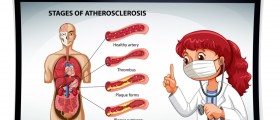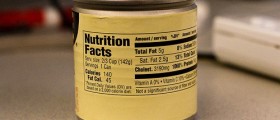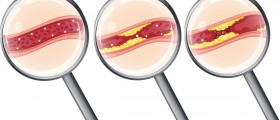
Many people around the world suffer from high levels of cholesterol. This is not a disease per se but represents a major risk factor of atherosclerosis and is a contributor to many serious and potentially life-threatening illnesses.
There are two types of cholesterol, HDL cholesterol and LDL cholesterol. HDL cholesterol is considered good since it increases re-uptake of cholesterol from the blood and its transfer to the liver. This type of cholesterol acts against the process of atherosclerosis. On the other hand, LDL cholesterol contributes to the process of atherosclerosis and increases the risk of cardiovascular disease.
Effects of High Cholesterol
All the negative effects of high cholesterol are connected to the process of atherosclerosis. This narrowing and hardening of the blood vessels occurs only if there is too much LDL cholesterol in the blood. In such case HDL cholesterol is simply not able to pick up all LDL cholesterol and remove it from the blood. The remnant cholesterol together with other fats and debris initiates the process of atherosclerosis and the build-up of plaques on the wall of arteries begins. Once atherosclerosis is initiated the build up may only increase and eventually cause significant narrowing if not complete blockage of the affected blood vessel.
Side Effects of High Cholesterol and Accompanying Atherosclerosis
The process of atherosclerosis can affect any blood vessel in the body and insufficient blood flow eventually leads to damage to many organs and organ systems. The process is most commonly generalized and there are more than two arteries affected.
In majority of cases atherosclerosis affects coronary arteries. The plaques found in the heart blood vessels are responsible for coronary artery disease (angina and heart attack) and heart arrhythmias. Furthermore, atherosclerosis of the brain blood vessels may eventually cause TIA or a stroke. In case of atherosclerosis of the blood vessels in the legs or arms the person develops periphery artery disease. And finally, patients suffering from atherosclerosis commonly develop hypertension. The intensity of negative effects of high cholesterol and accompanied atherosclerosis basically depend on the percentage of narrowing and the lack of blood required by the affected organ.

















Your thoughts on this
Loading...